
“Out of Many, One”
For naked mole-rats, it’s one for all, and all for one. You won’t see naked mole-rats in the deserts and dry savannas of eastern Africa, but they’re there, scurrying—backward and forward—through elaborate burrow systems that can be 18 feet deep. Their location under the earth makes them challenging to study in their native habitat, and most of what we know about their surprising behavior comes from studies in managed care.
Like a hive of honeybees, a single naked mole-rat “queen” is the only reproductive female in the colony. She mates with 1 to 3 reproductive males, and bears a litter of up to 20 offspring, 5 or 6 times a year. All the other mole-rats in the colony are workers who keep their subterranean world humming along. That makes the naked mole-rat Heterocephalus glaber one of a handful of eusocial mammals. (The other is the Damaraland mole-rat Cryptomys damarensis of southern Africa.) The prefix “eu” in the term “eusocial” means, “good, true, genuine,” and it is a clue that the behavior of these rodents goes beyond merely social. A naked mole-rat colony is more like an ant, honeybee, or termite colony than a group of small mammals.
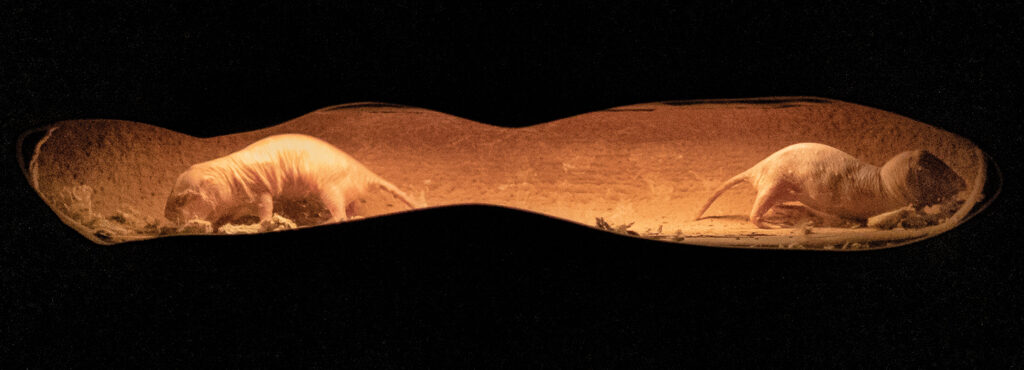
Who’s Who in a Mole-rat Colony
Amid the dozens (or sometimes hundreds) of naked mole-rats in a colony, the queen is the only reproductive female. Finding a mole-rat queen in the naked mole-rat habitat at the Zoo’s Wildlife Explorers Basecamp is like a real-life game of Where’s Waldo? (Challenging, but you will eventually spot her.) She’s the largest naked mole-rat in the colony, and also the only one with visible, nub-like teats. You might find her patrolling the tunnels or possibly resting smack in the middle of a pile of squirming naked mole-rats. A few (usually just one to three) of the next-largest in the colony are reproductive males—the only ones that breed with the queen.
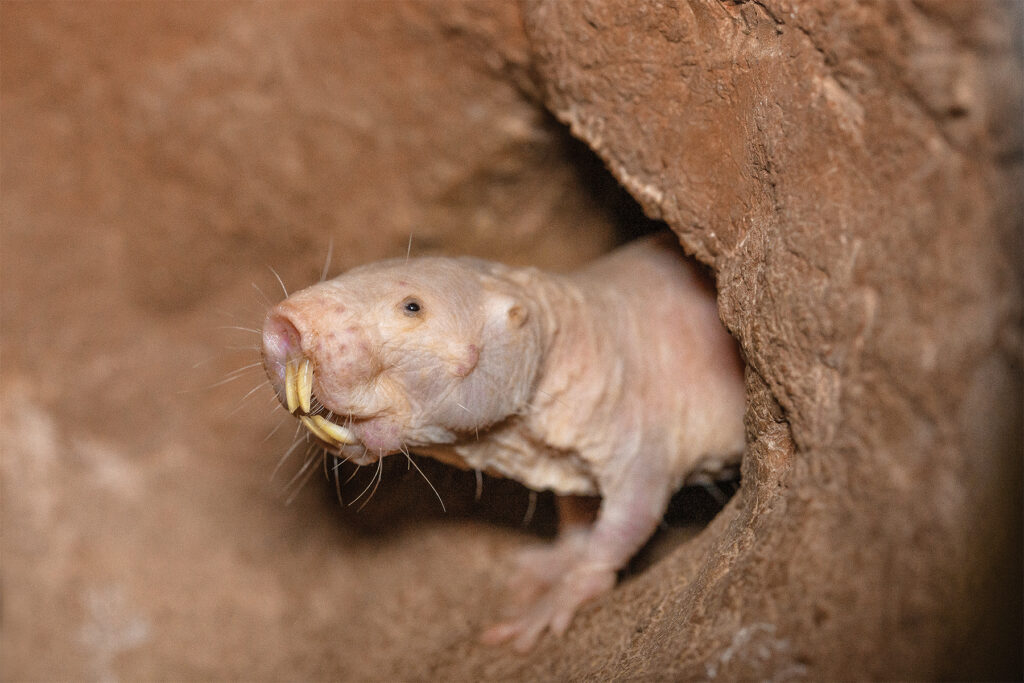
As for nonbreeding members of the colony, researchers have noted size-linked differences in behavior among them. Along with juveniles, the smallest adults do most of the work. “They gnaw through the earth to dig burrows, they look for roots and tubers underground, and they are constantly moving dirt,” says Nicki Boyd, curator of applied behavior at the San Diego Zoo. She has been caring for naked mole-rats since 1992, when they first came to the Zoo. “When the queen’s in the nest, nursing pups, they may take chunks of food to her.” They also care for her offspring. They clean and carry neonates to the nest, where they groom them, nudge them, and keep them warm.
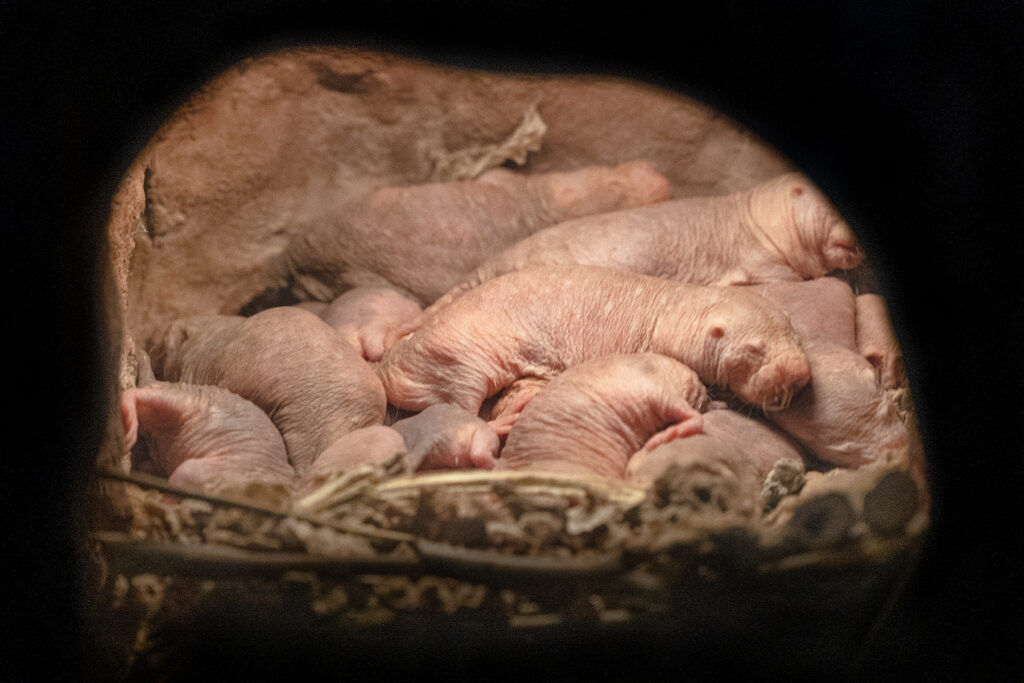
The largest nonreproductive adults don’t work as much, but along with the reproductive males, they play an important role in defending the colony from snakes or from incursions of neighboring mole-rats. “Because of their thick necks, I call them the ‘pit bulls’ of the colony,” says Nicki. And while most mole-rat workers are protected within the tunnel system, the largest mole-rats take on the risky role of kicking soil out onto the surface, a behavior called “volcanizing” because of the mound of earth that piles up outside of an opening.
Long Live the Queen
High levels of hormones in the queen’s urine help her maintain reproductive dominance. “When the other females are exposed to that hormone, they don’t even ovulate,” says Nicki. It’s typical for all of them—including the queen—to defecate and urinate in specific shared areas, called latrines, which are often dead-end tunnels. That means every naked mole-rat in the colony comes in contact with the queen’s urine.

The queen asserts dominance behaviorally, too. “The queen doesn’t just lie there—she patrols the area and keeps order in the colony,” says Nicki. A queen shoves the others around, and she walks right on top of them when they pass in the tunnels. These behaviors play an important role in reproductive repression, and help the queen maintain dominance.
The death of a queen typically initiates what Nicki calls a “mole-rat war,” as several females fight—often to the death—for the position. “They shove, push, and bite each other—kind of like rams butting heads,” she says. With incisors sharp and strong enough to gnaw through concrete, puncture wounds are common, prompting studies that have found naked mole-rats don’t feel pain the same way we do. “We monitor the wounds, but we have to let them work it out themselves as they would in their native habitat,” says Nicki.
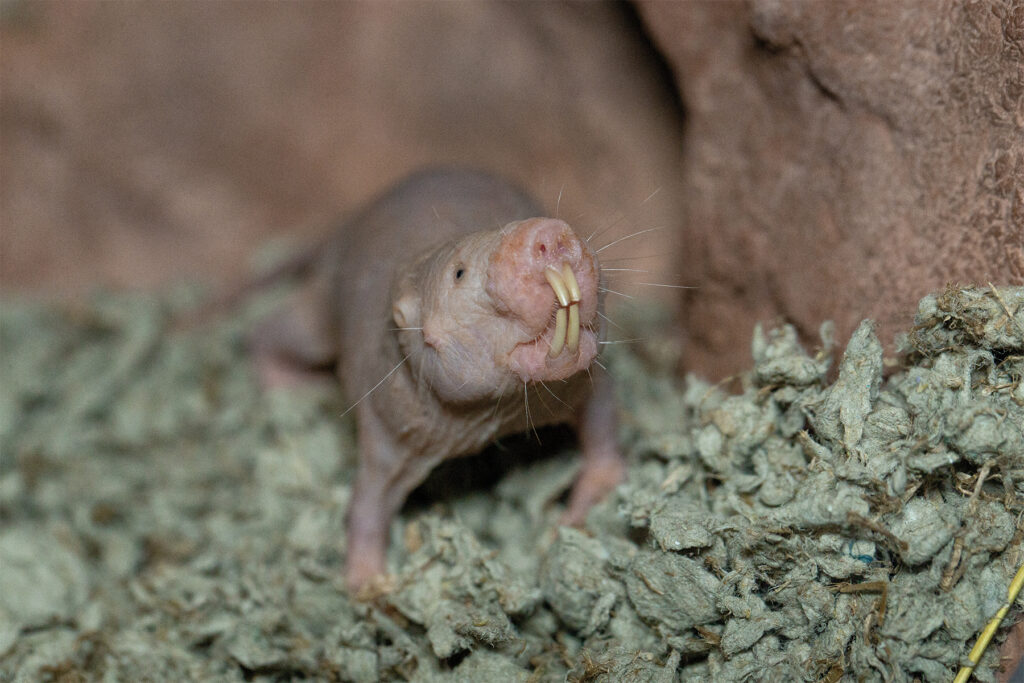
Over 30 years of caring for and learning about naked mole-rats, Nicki has also seen instances when the next-largest female has stepped into the role of queen with little violence. She’s even seen two queens in a colony. “That was really strange, but maybe the queen’s hormones weren’t strong enough to keep a second female from ovulating,” she postulates.
Once there is a new queen, what happens next is “really unheard of for a mammal,” says Nicki. No matter how old the new queen is, her spine lengthens, and she grows. “Even if she’s 10 or 15 years old—her vertebrae grow, so that she can accommodate large litters.” Then, the new queen starts breeding with reproductive males. Agonistic interactions become rare, and social order is restored. Soon, workers will have a new litter of pups to care for.
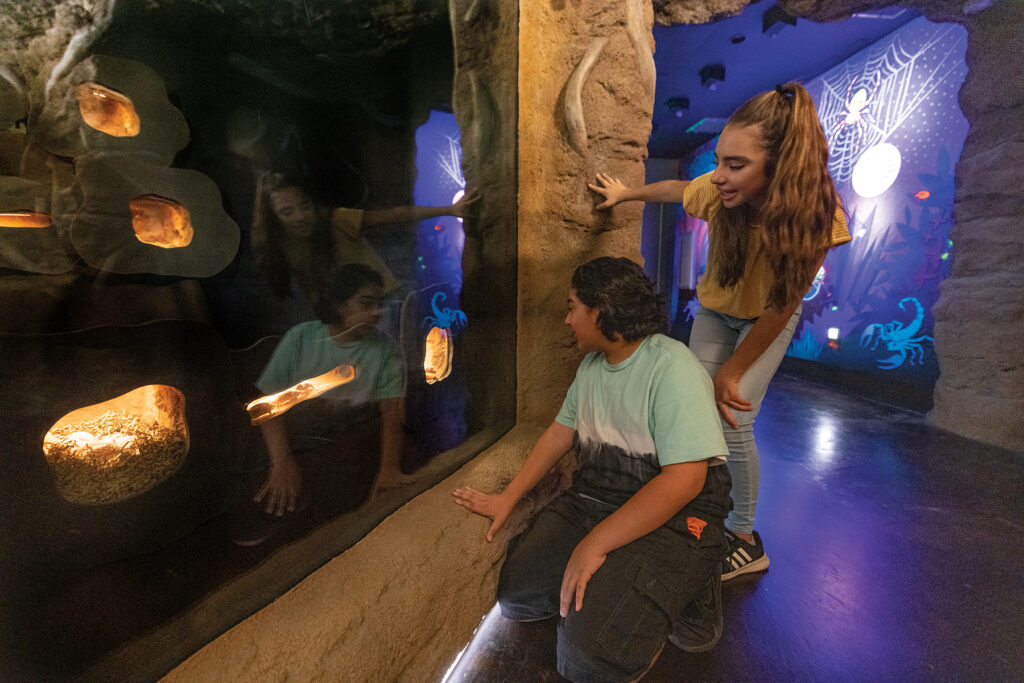
At the Zoo, you can find these fascinating rodents in the McKinney Family Spineless Marvels Invertebrate building at Wildlife Explorers Basecamp. Although naked mole-rats are mammals (which, of course, do have internal skeletons, including vertebrae), “we thought it made a lot of sense to make the connection with the leafcutter ants and honeypot ants around the corner, and the bees upstairs,” says Nicki. “They are a fossorial mammal that acts as an insect colony does. It’s a fascinating story of biodiversity.”
Cool Facts about Naked Mole-rats
1
They’re a lot alike. It’s no surprise that a colony shares a lot of the same DNA. What’s more surprising is that the DNA among different colonies is also quite similar.
2
They can survive in an extremely low-oxygen environment. In fact, they can go as long as 18 minutes without any oxygen at all.
3
They can close their mouth behind their teeth when they are gnawing through earth.
4
They rarely get cancer.
5
For a tiny rodent, they live a longtime—up to 30 years. A mouse the same size might live two or three years.
6
They eat their food twice (or more). They get more nutrients out of their food by eating their poop. They share poop, too, which also contains symbiotic bacteria that benefit digestion.




